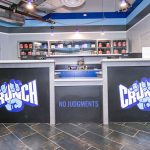U.S. online holiday sales from November to December 2023 will rise 4.8 percent year-over-year (YoY) to $221.8 billion, marked by retailers offering deep discounts and increased online shopping spend, according to Adobe’s forecast.
In the 2022 holiday season, shoppers spent $211.7 billion online, a 3.5 percent rise from the year before, Adobe indicated.
Said Adobe, “Never-before-seen discounts and the increased usage of the Buy Now, Pay Later (BNPL) flexible spending method, which is expected to drive $17 billion in online spending (vs. $14.5 billion in 2022, up 16.9 percent), will drive spending this season as consumers look to stretch their budgets when making purchases. Additionally, shopping on mobile devices is expected to hit a major milestone, surpassing desktop and driving over half (51.2 percent) of all online spending this season.”
Cyber Week, the shopping period that includes Thanksgiving, Black Friday and Cyber Monday, is expected to drive $37.2 billion in online spending, up 5.4 percent YoY and representing 16.8 percent of the holiday season. Adobe expects Cyber Monday will remain the season’s and 2023’s biggest shopping day, driving a record $12 billion in spending, up 6.1 percent YoY. Black Friday online sales are expected to grow 5.7 percent YoY to $9.6 billion, with Thanksgiving growing 5.5 percent YoY to $5.6 billion. Driven by deep discounts, these big shopping days remain important seasonal anchor points.
“Despite an unpredictable economic environment, where consumers face several challenges including rising interest rates, we expect strong e-commerce growth this season on account of record discounts and flexible payment methods,” said Patrick Brown, vice president of growth marketing at Adobe. “Buy Now, Pay Later, in particular, has become increasingly mainstream and will make it easier for shoppers to hit the buy button, especially on mobile devices where over half of online spending will take place.”
Record Discounts Expected This Season
Adobe sees retailer discounts hitting record highs, up to 35 percent off listed prices, this holiday season as they contend with an uncertain spending environment with consumers continuing to deal with rising costs in areas such as food and gas.
Of the 18 categories tracked by Adobe, toys, electronics and apparel are expected to offer the steepest deals, with toys to peak at 35 percent off list price versus 34 percent in 2022, while electronics discounts could hit 30 percent versus 25 percent and 25 percent off on apparel versus 19 percent. Other categories with notable discounts include sporting goods at 24 percent versus 10 percent, TVs at 22 percent versus 17 percent and furniture/bedding at 19 percent versus 8 percent.
The deepest discounts are expected to hit during Cyber Week—Black Friday, November 24, will be the best day to shop for TVs, while Saturday, November 25, will be the shopping day for the best computer deals. The deepest discounts for toys and apparel will be on Sunday, November 26. Cyber Monday, November 27, will offer the steepest discounts on electronics and furniture. Appliances deals will come on Tuesday, November 30, with the steepest discounts on sporting goods slated for Wednesday, December 4).
While Cyber Week is expected to have the best deals, consumers will see bargains as early as the second week of October, where discounts could be as high as 18 percent. Deals will also continue as high as 20 percent in the days leading up to Cyber Week (November 1 through November 17), offering consumers flexible spending in new ways this year.
Buy Now, Pay Later Continues Growing
Buy Now, Pay Later (BNPL) payment method is expected to set new records for the 2023 holiday season, driving $17 billion in online spending, up 16.9 percent YoY and $2.5 billion more than last year.
Adobe forecasts BNPL spending to hit $9.3 billion in November, making it the largest month on record. Cyber Monday BNPL option will be the largest day with $782 million spent, surpassing Cyber Monday 2022’s daily record of $658 million.
The BNPL option has had strong traction this year, with users spending $46.7 billion, up 14.7 percent YoY and $6 billion more than during the same period last year. The growth has been driven by groceries, where its share of spending grew by 37.5 percent YoY. Other categories driving growth include home/furniture, up 25.9 percent YoY, and apparel, up 15 percent YoY.
An Adobe survey of over 1,000 U.S. consumers found that one in five respondents will use the BNPL option to purchase holiday gifts during the 2023 shopping season.
Additional Adobe Analytics Insights
- Mobile shopping overtakes desktop. Over half (51.2 percent) of online holiday spend will be through mobile devices, a milestone reflecting improved small-screen shopping experiences. Mobile spending will hit a record $113 billion, up 13.7 percent YoY, with usage peaking on days when consumers are likely to be with friends and family, such as Thanksgiving and Christmas.
- Top sellers expected this holiday season. For toys, LEGO Minifigures, Kanoodle 3D, Barbie the Movie products, Shape Shifting Box, Tamagotchi Nano x Harry Potter, and Transforming Ariel Fashion Doll; Top gaming consoles will include Sony PlayStation 5, Xbox Series X, Nintendo Switch OLED and Meta Quest 3 VR Headset; while top games will include Madden NFL 24, NBA 2k24, Mortal Kombat 1, Marvel’s Spider-Man 2, Super Mario Bros Wonder, Cities Skylines 2, Call of Duty: Modern Warfare 3, Hogwarts Legacy, and Starfield. Other top sellers this holiday season will include iPhone 15 models, headphones, e-readers and Kindles, Fujifilm Instax Mini Evo cameras, Ember Mugs, Roombas, and Birkenstock Bostons.
- E-commerce categories to drive growth. Electronics, apparel, furniture/home goods, groceries, and toys will contribute $144.2 billion this season, for over half of the overall spend ($221.8 billion). These categories remain major revenue drivers online, with electronics driving $49.9 billion in spending (up 3.4 percent YoY), furniture/home goods at $26.6 billion (up 4.7 percent YoY), groceries at $18.9 billion, up 10.9 percent YoY as consumers plan holiday meals, and toys at $7.8 billion (up 5.4 percent YoY). Apparel remains a major category and is set to drive $41 billion, down 0.7 percent YoY, indicating some shift back to in-store shopping.
- Earlier shopping expected this year. A second Amazon Prime Day event, October 10-11, and other promotionals will drive early discounting and early holiday shopping. Prime Day October is forecasted to bring in $8.1 Billion (up 6.1 percent YoY), with discounts as high as 18 percent. Amazon’s Prime Day in July drove record online sales for the retail industry, with $12.7 billion spent (up 6.1 percent YoY). Adobe’s survey of over 1,000 U.S. consumers found that 49 percent of respondents expect to start this year’s holiday shopping in October.
Strong consumer spending continues to be driven by net new demand, not just higher prices. Adobe’s Digital Price Index shows prices online have fallen consecutively for 12 months, down 3.2 percent YoY in Aug. 202).
Adobe’s numbers are not adjusted for inflation, but if online deflation factors in, growth would be 7.7 percent to 8.3 percent. The findings are based on Adobe Analytics data, which offers a view into U.S. e-commerce by analyzing commerce transactions online, covering over one trillion visits to U.S. retail sites, 100 million SKUs and 18 product categories.
Photo courtesy Banana Republic 2023 holiday campaign
















